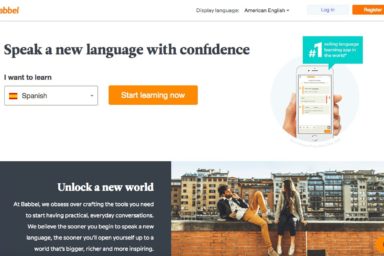19 best online language courses in 2024

- Our picks for the best online language courses
- Comparison table of the best language courses online
- Preply: Best for 1-on-1 lessons
- Rocket Languages: Best for comprehensive self-study
- Coursera: Best for accredited courses
- Fluenz: Best for classroom-style learning
- Memrise: Best for vocabulary
- Pimsleur: Best for auditory learners
- edX: Best for business professionals
- Alison: Best for affordable certification
- Fluent in 3 Months: Best for building motivation
- Busuu: Best for all-around learning
- LingQ: Best for learners with diverse interests
- FluentU: Best for multimedia learning
- Mondly: Best for AR and VR learning
- Duolingo: Best for casual learners
- LanguagePod101: Best for podcast lovers
- Babbel: Best for non-native English speakers
- Transparent Language: Best for minoritized languages
- Mango Languages: Best for readers
- Rosetta Stone: Best for old-school learners
- Consider learning with one of the best online language courses
Choosing the best online language course can take time and effort. After all, everyone learns differently, and what works for others may not work for you. So how can you determine which learning option is right for you? Well, we’re here to help.
In this article, we’ve reviewed 19 of the best online language courses currently available. We included all the information you need to know – pricing, best use cases, sample topics, and pros and cons – so you can find a program well-suited for you. Explore the online classes listed below and take your language learning to the next level today!
Our picks for the best online language courses
- Preply
- Rocket Languages
- Coursera
- Fluenz
- Memrise
- Pimsleur
- edX
- Alison
- Fluent in 3 Months
- Busuu
- LingQ
- FluentU
- Mondly
- Duolingo
- LanguagePod101
- Babbel
- Transparent Language
- Mango Languages
- Rosetta Stone
Comparison table of the best language courses online
|
Course |
Pricing |
Best use cases |
|
Preply |
Starting at $5/lesson |
Personalized 1-on-1 lessons with native speakers |
|
Rocket Languages |
Starting at $149.95 one-time payment for Level 1 |
Learning all the essential language skills on your own |
|
Coursera |
Free access to many courses. Starting at $59/month. |
Following courses from accredited universities |
|
Fluenz |
Starting at $187 for Level 1 or 2 |
Independent students who prefer a structured, classroom-style approach |
|
Memrise |
Free access to some features. $14.99/month. |
Expanding your vocabulary using spaced-repetition flashcards |
|
Pimsleur |
Free access to some features. Starting at $20/month. |
Speaking and listening to guided conversations |
|
edX |
Free access to courses. Between $50 to $300 to earn a certificate and complete assignments. |
Free courses for business professionals |
|
Alison |
Free access to courses. Starting at $22 for a digital certificate. |
Completing a language certification course on a budget |
|
Fluent in 3 Months |
$197 one-time payment for one language course |
Beginners who want more guidance and structure to start speaking a new language quickly |
|
Busuu |
Free access to some features. $13.90/month. |
Learning basic vocabulary and grammar on a busy schedule |
|
LingQ |
Free access to some features. $12.99/month. |
Learning vocabulary and grammar in context |
|
FluentU |
$29.99/month |
Learning a language through real-world media like music videos, movie trailers, and news |
|
Mondly |
Free access to some features. $9.99/month. |
Practicing real-world vocabulary and phrases with cutting-edge technology |
|
Duolingo |
Free access to all lessons. $12.99/month. |
Building a consistent daily learning habit through gamification |
|
LanguagePod101 |
Free access to some features. Starting at $4/month. |
Improving your vocabulary and listening comprehension with podcasts |
|
Babbel |
$66.90 for 6 months |
Learning vocabulary, pronunciation, and culture through structured lessons |
|
Transparent Language |
Starting at $24.95/month for one language |
Learning more obscure languages |
|
Mango Languages |
Free access through some organizations. $7.99/month. |
Learning sentence construction and vocabulary by reading |
|
Rosetta Stone |
$15.99/month |
Acquiring new vocabulary through more traditional learning |
Preply: Best for 1-on-1 lessons
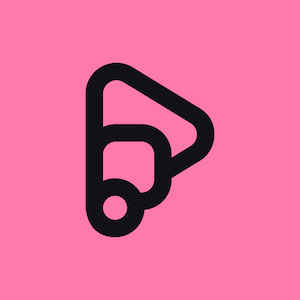
- Best use cases: Personalized 1-on-1 lessons with native speakers
- Pricing: Starting at $5/lesson
- Free trial: No
- Sample topics: Business English, IELTS and TOEFL test preparation, Spanish for professionals, Japanese literature
Preply is an online platform that connects students with expert instructors for 1-on-1 tutoring in over 50 languages.
Preply features a search tool that gives you all the information you need to find the perfect tutor: ratings, prices, teaching specialties, location, time zone, availability, and more. When you find your ideal instructor, you can start learning from an actual, experienced human, not an app or pre-recorded course.
Building a connection and relationship with your tutor makes learning more engaging. In fact, Preply users agree: 92% say 1-on-1 lessons are more fun than previous methods they’ve used.
Preply tutors will also create a personalized learning plan based on your goals and needs. Whether you want to prepare for an exam or brush up on your conversation skills, your tutor can help you.
The Preply classroom provides many learning tools: video calls, messaging, note-taking, an interactive whiteboard, and more. Some languages on Preply, including English and Spanish, also have an extensive library of learning materials you can use outside lessons.
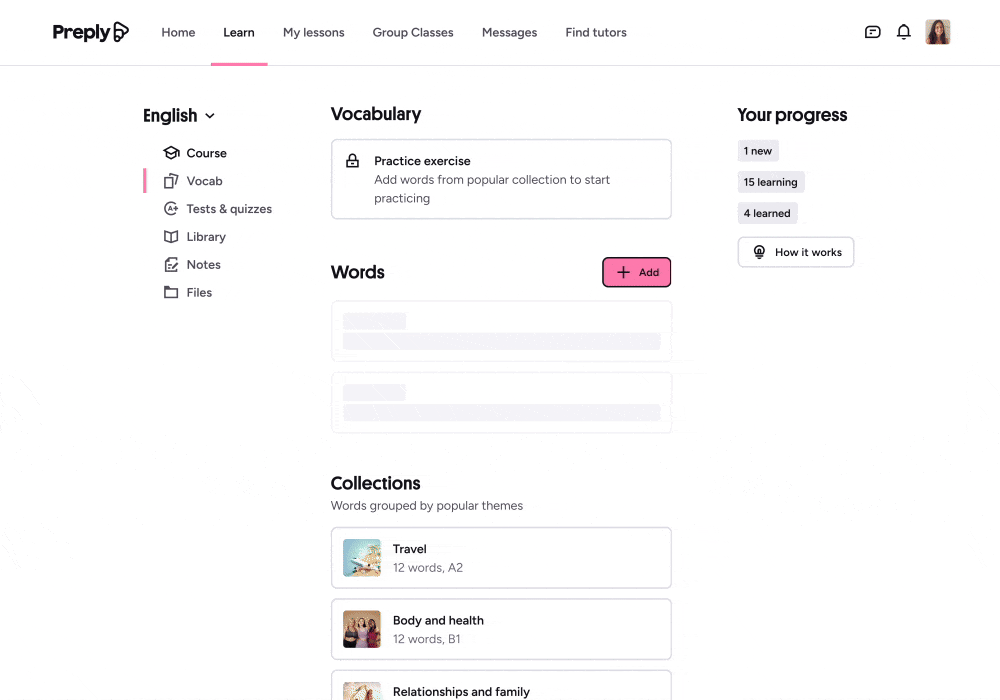
Finally, if you take your first lesson and are not 100% satisfied, Preply will find you another tutor for free. So, Preply is an outstanding option if you want to learn a new language online.
Pros
- Over 32,000 qualified tutors available
- Personalized curriculum
- Flexible lesson scheduling
- Extra self-study materials included
Cons
- Not free
- Live video lessons require a strong internet connection
Rocket Languages: Best for comprehensive self-study

- Best use cases: Learning all the essential language skills on your own
- Pricing:
- $149.95 one-time payment for Level 1
- $299.90 one-time payment for Levels 1 and 2
- $449.85 one-time payment for Levels 1 through 3
- Free trial: Free introductory lessons
- Sample topics: Public transportation, ordering food, advanced grammar
Rocket Languages is a comprehensive language learning platform that offers courses in over 14 different languages. Their methodology combines input (listening and reading) with output (speaking and writing) to cover all the essential language skills.
The courses feature interactive audio lessons about conversational topics. Each lesson, which can range between 15 and 40 minutes long, features audio recordings from native speakers. You can also learn with other resources like culture lessons, writing exercises, and a “survival kit” of essential vocabulary and phrases.
However, there isn’t much variety in the exercises, so lessons can get repetitive after a while. They are also mostly taught in English, so you won’t be immersed in your target language, which is essential for becoming fluent fast.
Pros
- A one-time charge gives you lifetime access
- Covers all the essential language skills from beginner to advanced levels
Cons
- Not much speaking practice
- Expensive for a self-guided online course
Coursera: Best for accredited courses

- Best use cases: Following courses from accredited universities
- Pricing:
- Free access to many courses
- Starting at $59/month
- $399/year ($33.35/month)
- Free trial: 7-day free trial
- Sample topics: Business English communication skills, advanced French language and culture, Spanish for healthcare settings
Coursera is an online learning platform that offers courses and certificate programs from leading universities, including language courses. Coursera offers hundreds of language courses catering to all levels, from beginner to advanced. Many of these courses were created by top universities around the world, like the University of Pennsylvania, Yonsei University, and the University of California.
Like most online courses, you will follow the course on your own schedule by watching lecture videos. You can “audit” most courses for free, but you’ll have to pay if you want to get graded assignments or certificates.
Pros
- Courses are created by leading universities and industry educators
- Option to earn certificates
Cons
- Not specific to language learning
- More expensive than many other options
Fluenz: Best for classroom-style learning

- Best use cases: Independent students who prefer a structured, classroom-style approach
- Pricing:
- $187 for Level 1 or 2
- $258 for Levels 1+2 or 4+5
- $308 for Levels 1+2+3
- $320 for Levels 3+4+5
- $408 for Levels 1+2+3+4+5
- Free trial: 30-day money-back guarantee
- Sample topics: Grammar, conversational vocabulary, writing, spelling
Fluenz combines the structure of a classroom environment with the convenience of a language learning app. You’ll learn by watching lecture videos where an instructor explains vocabulary and grammar so you can understand how the language works.
Every lesson includes a dialogue accompanied by subtitles in English and your target language, then only the target language, then no subtitles at all. This helps you learn real-world applications of the language rather than just memorizing vocabulary and expressions.
However, Fluenz only offers courses for popular languages like Spanish, French, German, Italian, and Mandarin. You may also get tired of the drill-based exercises, which can get repetitive over time.
Pros
- Can jump around levels freely
- Download lessons to watch offline
Cons
- Lessons are taught in English instead of immersing you in your target language
- No live lessons
Memrise: Best for vocabulary
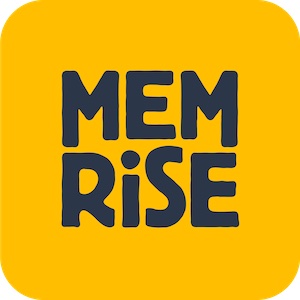
- Best use cases: Expanding your vocabulary using spaced-repetition flashcards
- Pricing:
- Free access to some features
- $14.99/month
- $89.99/year ($7.50/month)
- $199.99 for lifetime access
- Free trial: 14-day free trial
- Sample topics: Everyday vocabulary and phrases, conversational topics like food and entertainment
Memrise primarily uses gamified quizzes and videos to teach learners over 20 languages. To help students retain more information, the activities are based on a learning algorithm rooted in cognitive science called spaced repetition. You’ll review flashcards until you’ve mastered them. Memrise will keep showing you ones that you don’t know yet until you learn them. This methodology helps with long-term retention, especially for vocabulary.
While these interactive exercises can be fun, there’s a limit to how truly immersive the experience can be. You don’t get the opportunity to practice the language in real conversations, and there’s no grammar practice included, which is essential to advance beyond a basic level.
Pros
- Videos narrated by native speakers
- Gamified learning experience keeps you motivated
Cons
- No grammar practice
- Limited free content
Read more in our guide comparing the popular apps Rosetta Stone vs. Memrise to see which one is right for you!
Pimsleur: Best for auditory learners
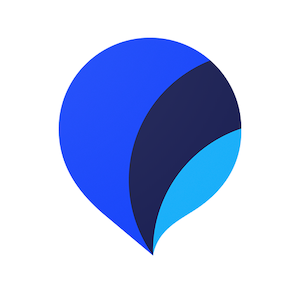
- Best use cases: Speaking and listening to guided conversations
- Pricing:
- Free access to some features
- $20/month
- $21/month for access to all 50+ languages
- Free trial: 7-day free trial
- Sample topics: Listening comprehension, pronunciation, sentence structure
Pimsleur aims to teach languages strictly through audio recordings. This approach is referred to as “graduated interval recall,” which the platform says helps students remember new vocabulary without relying on monotonous repetition.
This hands-off method, initially introduced by Dr. Paul Pimsleur in 1963, requires students to put aside grammar textbooks and learn by listening. This can be a massive advantage for those who learn on the road. The audio lessons use recordings from native speakers to help you learn correct pronunciation and real-world vocabulary.
Pimsleur is great for improving your listening skills. Still, if you want to enhance in other areas (e.g., reading, speaking, writing), you may find this audio-only approach to be a slower, more limited language learning experience.
Pros
- Voice coach feature provides pronunciation feedback
- Hands-free “driving mode” allows you to learn on the go
Cons
- No visual learning features
- No conversation or writing practice
edX: Best for business professionals
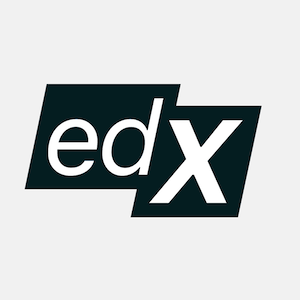
- Best use cases: Free courses for business professionals
- Pricing:
- Free access to courses
- Between $50 to $300 to earn a certificate and complete assignments
- Free trial: Free access available
- Sample topics: Italian language and culture, Japanese pronunciation, Indigenous languages
EdX offers courses from top-notch institutions that cover various subjects, including language learning. For instance, they have classes for English for business communication and medical Spanish. The platform provides discussion forums to engage with other learners and certificates upon course completion.
However, you’ll need to pay for the course if you want to complete assignments or get a certificate. The high cost of classes – often hundreds of dollars – will likely be an issue for many people, especially if they’re looking for extra practice. There are also limited language courses since the site isn’t solely dedicated to language learning.
Pros
- Classes offered by well-known institutions
- Self-paced learning
Cons
- Limited options for beginners
- More expensive than other language programs
Alison: Best for affordable certification
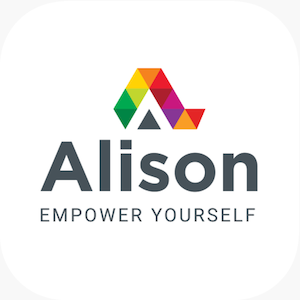
- Best use cases: Completing a language certification course on a budget
- Pricing:
- Free access to courses
- €7.99/month to remove ads
- Starting at $22 for a digital certificate
- Free trial: Free access available
- Sample topics: English for STEM, Chinese pronunciation and tones, German for customer service and sales
Like edX, Alison provides lessons in multiple subjects, including language learning. Students can learn the basics of a language (e.g., grammar, everyday conversation) or how it’s used in different professions (e.g., tourism, journalism).
You can take all Alison courses for free, but you must pay for a certificate or diploma. The free version of the site offers the same courses as the premium subscription. However, additional premium features include no ads, a resume builder, and discounted certificates.
Although an ad-free experience is nice, the premium subscription doesn’t provide additional learning benefits. And while language certifications are good to have on your resume, Alison-branded certifications may mean little to the organization you hope to impress. You’re better off studying for widely recognized certifications, like the IELTS and TOEFL for English.
Pros
- Suitable for complete beginners
- Low-cost certificates available
Cons
- Certification not widely recognized
- Too many ads in free version
Fluent in 3 Months: Best for building motivation
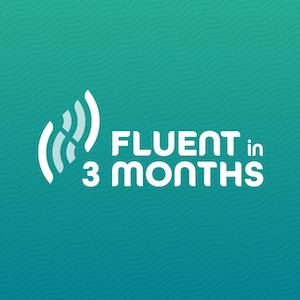
- Best use cases: Beginners who want more guidance and structure to start speaking a new language quickly
- Pricing:
- $197 one-time payment for one language course
- Starting at $39 one-time payment for supplementary resources
- Free trial: 30-day money-back guarantee
- Sample topics: Conversational topics, language learning hacks, finding a conversation partner
Fluent in 3 Months features a series of modules that walk you through the basics of your chosen language. You also get access to their online community, which provides additional support and motivation.
The site gives learning tools to break down your target language and begin speaking it as quickly as possible. The enthusiasm and positivity of the platform will have even the biggest pessimist believing they can learn a new language.
However, unlike the site’s name suggests, the program doesn’t promise real fluency in 90 days. Instead, the goal is to make you feel able to have a 15-minute conversation in the target language within that time.
Pros
- Built for complete beginners
- Lots of learning resources
Cons
- 1-on-1 tutoring is costly
Busuu: Best for all-around learning
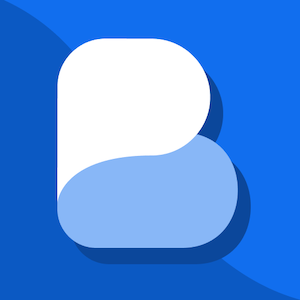
- Best use cases: Learning basic vocabulary and grammar on a busy schedule
- Pricing:
- Free access to some features
- $13.90/month
- $50.70 for 6 months ($8.45/month)
- $83.40/year ($6.95/month)
- Free trial: 30-day free trial
- Sample topics: Conversational vocabulary, grammar
Busuu offers traditional app language learning alongside the option for live group classes starting at $26 for two lessons. Certifications and group lessons with tutors are available with Busuu Live at a higher cost.
The app features different modules you can work through at your own pace. These short lessons focus mostly on vocabulary and grammar, although you’ll occasionally get the opportunity to practice speaking too.
Like many popular language apps, Busuu uses spaced repetition to help you retain new vocabulary in your long-term memory. However, you can’t create your own word lists, so you’re limited to the topics Busuu provides.
Pros
- Easy “bite-sized” lessons
- Option to set personalized goals
Cons
- Additional cost for live language classes
- Grammar lessons are limited to a premium subscription
LingQ: Best for learners with diverse interests

- Best use cases: Learning vocabulary and grammar in context
- Pricing:
- Free access to some features
- $12.99/month
- $71.94 for 6 months ($11.99/month)
- $107.88/year ($8.99/month)
- $191.76 for 2 years ($7.99/month)
- Free trial: 7-day free trial
- Sample topics: Reading, listening comprehension, vocabulary in context, grammar
With its vast library of audio and text content, LingQ (pronounced “link”) allows students to pick what topics interest them and learn about it in their target language. You can also import your own material into the app, like song lyrics and PDFs.
LingQ teaches you new vocabulary by having you identify new words and learn their definitions in context. When you’re reading the text, you’ll click on unfamiliar words, highlighted in blue, and learn their definitions as you read or listen to the content. If you don’t know the word, you’ll associate a definition from the built-in dictionary. Then you’ll save it as a term to review later, known as a “LingQ.”
Mobile phone access, an online learning community, and progress tracking provide additional motivation. Unfortunately, the site’s passive learning technique – only listening and reading activities – is not best-suited for those hoping to hold meaningful conversations in another language.
Pros
- Large content library
- Access to online community
Cons
- Free version limits you to only five lessons and 20 LingQs
- No speaking practice
FluentU: Best for multimedia learning
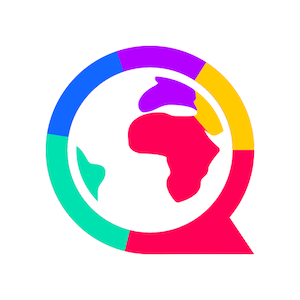
- Best use cases: Learning a language through real-world media like music videos, movie trailers, and news
- Pricing: $29.99/month
- Free trial: 14-day free trial
- Sample topics: Real-world dialogues, conversational topics like movies, travel, and current events
FluentU offers videos, audio files, and interactive quizzes to help immerse learners in their target language. Their mobile app also makes learning easy if you’re on the go. Nevertheless, FluentU’s best feature is listening to native speakers talk about real-world situations in context.
However, despite having audio transcripts available, FluentU may not be suitable for beginners as it doesn’t offer formal vocabulary or grammar lessons to help you build a solid foundation.
Also, while FluentU can improve your listening skills, the site doesn’t allow you to practice speaking. This limits your ability to reach a conversational level in your target language.
Pros
- Videos narrated by native speakers
- Transcriptions available
Cons
- No speaking practice
- Not ideal for beginners
Mondly: Best for AR and VR learning
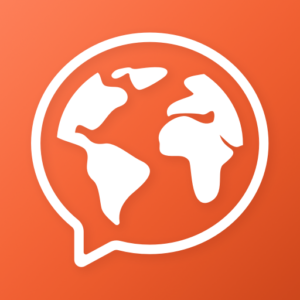
- Best use cases: Practicing real-world vocabulary and phrases with cutting-edge technology
- Pricing:
- Free access to some features
- $9.99/month
- $47.99/year ($3.99/month)
- Free trial: 7-day free trial
- Sample topics: Vocabulary, grammar, conversational topics like grocery shopping
Mondly offers 41 languages and gamifies the learning process, so studying doesn’t feel like such a chore. Lessons are designed to be fun and easy, and you can complete them in about 10 to 15 minutes.
The platform also has augmented reality (AR) and virtual reality (VR) features that help you practice listening and speaking in a simulated environment. However, you need an Oculus headset to use the VR app, which costs an additional $5. But if you have a paid subscription, you can use the AR app with your mobile device.
Besides the AR/VR exercises, Mondly’s gamified activities are similar to many other apps and online language courses, which can get repetitive quickly.
Pros
- Quick, simple lessons
- AR/VR features
Cons
- Not suited for advanced language learners
- No feedback on speaking exercises
Duolingo: Best for casual learners

- Best use cases: Building a consistent daily learning habit through gamification
- Pricing:
- Free access to all lessons
- $12.99/month
- $83.99/year ($6.99/month)
- Free trial: 14-day free trial
- Sample topics: Basic vocabulary for conversational topics like weather, numbers, family, friends, and travels
Duolingo is often touted as the most popular online language learning app. With its free content, flashy design, engaging games, and cute owl mascot, it’s easy to see why.
You’ll complete short interactive exercises on your mobile phone, which means you can learn anytime, anywhere. However, keep in mind that Duolingo is not designed to provide fluency. Even lessons for popular languages like Italian don’t reach an advanced level, making this app best-suited for introducing beginners to a new language.
Pros
- Good for beginners
- Gamified learning
Cons
- Can get repetitive
- No speaking practice
Check out our guide to Babbel vs. Duolingo to see which popular language app is best for you!
LanguagePod101: Best for podcast lovers
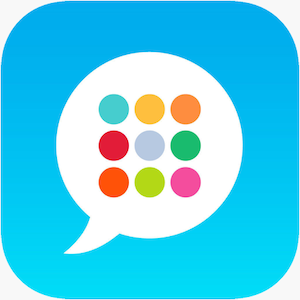
- Best use cases: Improving your vocabulary and listening comprehension with podcasts
- Pricing:
- Free access to some features
- Starting at $4/month
- Free trial: 7-day free trial
- Sample topics: Listening comprehension, pronunciation, basic grammar, practical dialogues for everyday situations
LanguagePod101 offers lessons for 34 languages via podcasts that are available through audio and video recordings. All podcasts have accompanying lesson notes and transcripts that you can follow as you listen. Each lesson explores a guided conversation in your target language with an instructor who explains the vocabulary, grammar, and sentence structure. However, these lessons are taught in English, which means you won’t get the benefits of language immersion.
Premium subscribers can access tools like flashcards and grammar banks, whereas Premium Plus members can also work with teachers. Unfortunately, these subscription options are pretty expensive, and you can’t have live conversations or video calls with a teacher.
Pros
- Wide range of topics and study materials
- Includes downloadable PDFs and vocabulary lists
Cons
- Lessons are taught in English rather than your target language
- Premium subscriptions are expensive
Babbel: Best for non-native English speakers
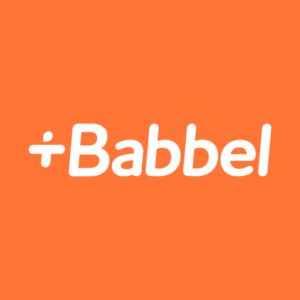
- Best use cases: Learning vocabulary, pronunciation, and culture through structured lessons
- Pricing:
- $66.90 for 6 months ($11.15/month)
- $89.40 for 12 months ($7.45/month)
- $349 for lifetime access to all languages
- Free trial: Free first lesson
- Sample topics: Vocabulary, basic to advanced grammar, sentence structure
Babbel teaches foreign languages via dialogue, focusing predominantly on vocabulary for real-life scenarios. The platform uses spaced repetition to help you memorize new terms without becoming bored.
Lessons are also tailored to students depending on their native language. For instance, the explanations Babbel provides for learners who are native English speakers are different from those who are native French speakers. You also have the option to take live group classes with Babbel Live, which offers classes for Levels A1 to C1 for an additional cost.
While Babbel may be more robust than Duolingo, it follows a similar structure. This means you may quickly tire of learning via games and might want to seek a more real-world experience with human interaction.
Pros
- Lots of content
- Lessons customized for native speakers of various languages
Cons
- Can be repetitive
- No live conversation practice
Transparent Language: Best for minoritized languages
- Best use cases: Learning more obscure languages
- Pricing:
- Starting at $24.95/month for one language
- Starting at $149.95/year ($12.50/month) for one language
- Free trial: 14-day free trial
- Sample topics: Culture, travel basics, conversational vocabulary
Compared to many popular online language courses, Transparent Language covers the most languages – over 100! This is due to their commitment to make high-quality language learning resources accessible to everyone.
Their comprehensive curriculum teaches all the vital language skills – reading, writing, listening, and speaking – through interactive exercises. Each language course covers thousands of words and phrases to help you build a solid vocabulary.
Over 12,000 libraries, corporate organizations, and educational institutions worldwide can give you access to a subscription, so research your options before paying. Otherwise, Transparent Language is quite expensive compared to other similar language learning platforms.
Pros
- Detailed progress tracking
- Option to get a certificate after completing the course
Cons
- No live interaction with tutors or other learners
- Pretty outdated
Mango Languages: Best for readers
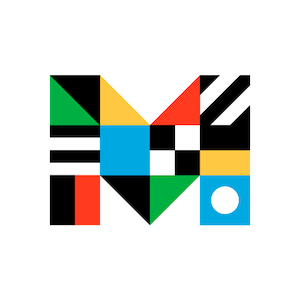
- Best use cases: Learning sentence construction and vocabulary by reading
- Pricing:
- Free access through some organizations
- $7.99/month
- $79.99/year ($6.67/month)
- Free trial: 14-day free trial
- Sample topics: Vocabulary, grammar, pronunciation, culture
Mango Languages focuses mostly on interactive reading and listening exercises, making it ideal for those who want to develop these language skills. The platform uses its “Intuitive Language Construction” method to teach students sentence structure and grammar. All lessons, activities, and reviews are color-coded by part of speech and translated into English to help you learn sentence construction.
Mango has audio recordings from native speakers so learners can listen to and repeat phrases from real-life conversations. It also has a “movies” section, which offers a collection of videos and songs in various languages at different proficiency levels.
However, if you’re looking for a more interactive learning experience, then there are better options to genuinely engage with your target language and practice speaking with others.
Pros
- 70+ languages available
- Content includes cultural information
Cons
- No conversation practice
- No formal grammar lessons
Rosetta Stone: Best for old-school learners
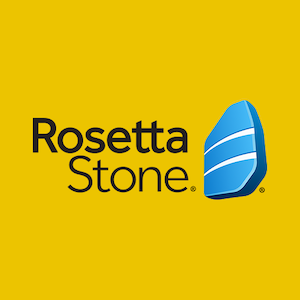
- Best use cases: Acquiring new vocabulary through more traditional learning
- Pricing:
- $15.99/month
- $167.88/year ($13.99/month)
- $399 for lifetime access
- Free trial: 3-day free trial
- Sample topics: Vocabulary, basic grammar, everyday dialogues, listening comprehension
Rosetta Stone was the original king of language learning apps, and it’s still around today. Modules include speech recognition software so you can perfect your pronunciation.
While still continuing with its self-paced immersion-style language lessons, the company has also recently added options for live coaching with native speakers. Unfortunately, these are small group classes that don’t provide personalized learning or many opportunities to practice speaking.
Pros
- TruAccent™ speech recognition helps improve your pronunciation
- Access to lessons offline
Cons
- Repetitive exercises
- Limited explanations of grammar concepts
Consider learning with one of the best online language courses
There are many options for online language courses, and the best choice for you will come down to your specific circumstances. For instance, you might have a low budget or want to focus specifically on listening.
If you’re looking for the best all-around language learning experience, then Preply is your best option. You can choose from literally thousands of expert tutors based on factors like availability, pricing, country of origin, and specialty. Once you choose a tutor, you’ll get a personalized learning plan based on your current level of proficiency and goals. If you aren’t satisfied with your tutor, Preply will replace your tutor for free up to two times.
Tutors are available in every time zone around the world, and you get to schedule your own lessons, making it easy to build your language learning journey into a busy schedule.
So whether you want to work with an online English tutor to converse with your in-laws or learn Spanish for a new job, Preply can help you get there.
Next article

The 10 best ASL apps: Learn sign language in 2024
We’ve assessed the pros, cons, prices, and features of the best asl app so you can choose the perfect one to achieve your goals.
Previous article

Top online public speaking classes
Want people to hang on to your every word? We’ve assessed the top online platforms with the best public speaking courses so you can find the best fit for you.







